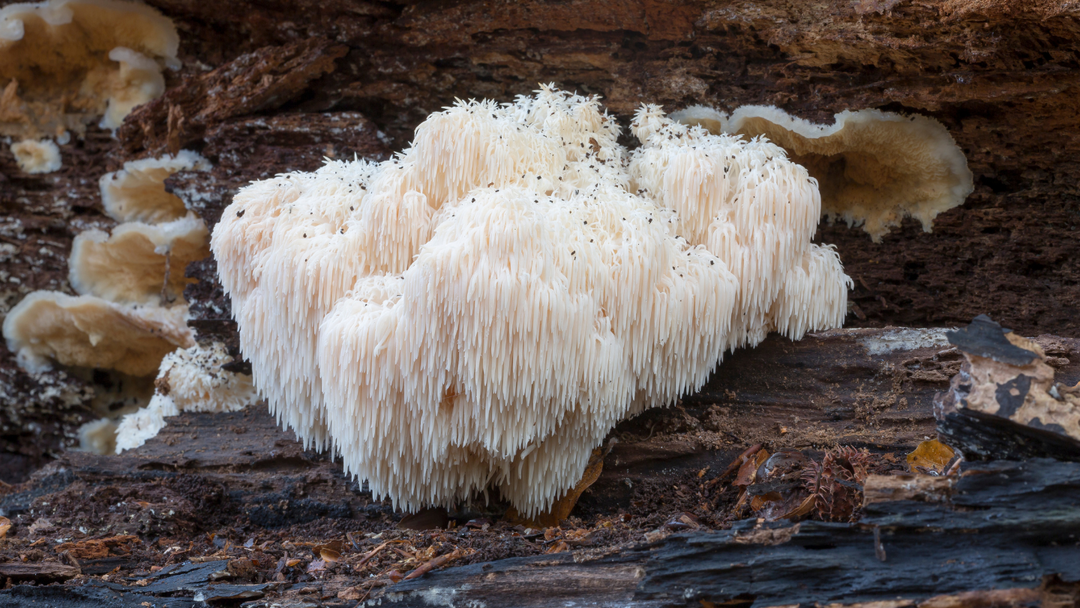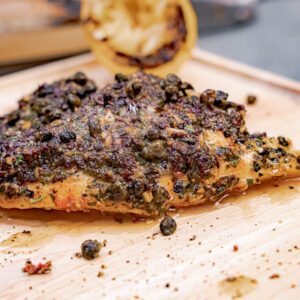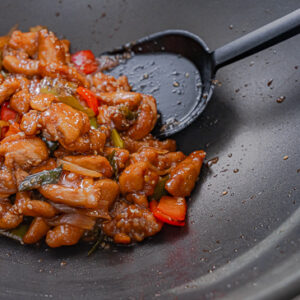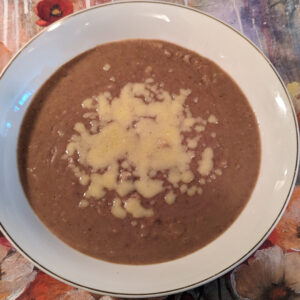[ad_1]
Take a gastronomic journey with us as we explore the mystery of Lion’s Mane Mushrooms. These unique mushrooms, well-known for their robust texture and distinctive look, offer a delicious culinary experience for those looking for something unique. We will lead you through the process of cooking Lion’s Mane Mushrooms in this guide, starting with picking the freshest examples and going over a number of delectable dishes that showcase their adaptability. Join us as we examine the craft of cooking this remarkable mushroom, regardless of your level of culinary experience. Prepare to indulge your palate with the delectable aromas of Lion’s Mane Mushrooms as you uncover the culinary magic concealed in every delicate thread.
What is a Lion’s Mane Mushroom?
Introducing the Lion’s Mane Mushroom, an intriguing fungal species that is unique in both look and flavor. This unusual fungus, scientifically named Hericium erinaceus, gets its name from its unusual cascading structure, which mimics the mane of a lion. These mushrooms, which are native to North America, Europe, and Asia, are becoming more and more well-known for their gastronomic and possible health advantages in addition to their attractive appearance.
The appearance of Lion’s Mane Mushrooms is breathtaking. Their mane-like shape is created by their long, cascading tendrils, which vary in hue from creamy white to light yellow. Not only is this mushroom visually stunning, but it also has a delicious flavor that is almost seafood-like with a soft, meaty texture.
The Lion’s Mane Mushroom has captured the attention of health enthusiasts in addition to its gastronomic appeal. It is a topic of continuous study in the field of natural medicine as it is thought to contain substances that may support cognitive well-being.
A Lion’s Mane Mushroom welcomes you to experience its unique flavor and discover the possibilities it holds in the kitchen and beyond, whether you are a food adventurer or someone curious about the possible health advantages of unusual mushrooms.
How To Store And Clean a Lion’s Mane Mushroom
To guarantee freshness and maximum taste in your cooking, it is essential to store and clean Lion’s Mane Mushrooms. Now let us discuss the useful tips for managing these unusual fungi:
Cleaning Lion’s Mane Mushrooms
Gentle Brushing: To start, gently brush off any dirt or debris from the mushroom’s surface with a gentle brush or a moist cloth. Because of its delicate texture, Lion’s Mane Mushrooms must be handled carefully to maintain their shape.
Minimal Water: Lion’s Mane requires less water to clean than certain other mushrooms. Their texture may be impacted by excessive wetness. If necessary, give the mushrooms a quick washing before patting them dry with a paper towel.
Trimming: Look for any rotten or broken sections of the mushrooms. Make sure to save the freshest and tastiest parts by trimming these sections with a sharp knife.
Storing Lion’s Mane Mushrooms
Refrigeration: To store Lion’s Mane Mushrooms for a brief period, keep them in the refrigerator in a paper bag or a loosely packed container. This keeps the atmosphere cold and just a little bit humid.
Steer clear of plastic bags: Lion’s Mane requires some air movement, unlike certain other mushrooms. They should not be kept in plastic bags as this might cause moisture to accumulate and degrade the quality of the product.
Long-Term Preservation: Freezing is an option if you want to keep them for a long time. After cleaning, slice the mushrooms and place them flat in the freezer on a tray. Once frozen, place them in an airtight bag. Their texture is adequately preserved with this procedure.
Health Benefits of Lion’s Mane Mushrooms

In addition to captivating the palette with its distinct flavor and texture, Lion’s Mane Mushrooms may provide several health advantages. Let us examine the dietary composition of these mushrooms and the potential health benefits:
The possible cognitive advantages of lion’s mane mushrooms became apparent. They include substances that could promote the synthesis of nerve growth factor (NGF), a protein essential to the development and upkeep of nerve cells. Regular ingestion may help issues associated with brain health and boost cognitive function, according to several types of research.
Lion’s Mane Mushrooms, being high in antioxidants, have the potential to mitigate inflammation inside the body. Because chronic inflammation is associated with many health problems, eating foods like these mushrooms that have anti-inflammatory qualities may help to promote general well-being.
Lion’s Mane Mushrooms contain beta-glucans, which have been linked to immune-stimulating qualities. These substances could aid in immune system modulation, fostering a responsive and well-balanced defense against infections.
Dietary fibers found in Lion’s Mane Mushrooms may help maintain digestive health. Fiber is necessary to support regular bowel movements and healthy gut bacteria.
Antioxidants are essential for scavenging the body of free radicals, which are linked to aging and a number of illnesses. Because of its high antioxidant content, lion’s mane mushrooms may help shield cells from oxidative damage.
It is vital to remember that, despite encouraging data, further studies are required to completely grasp the health advantages of Lion’s Mane Mushrooms for humans. Before making any dietary adjustments, as with any addition, it is best to speak with a healthcare provider, especially if you have any pre-existing health ailments or concerns. Lion’s Mane Mushrooms can be a tasty method to investigate their possible health benefits when included in a balanced diet.
What Does Lion’s Mane Taste Like?
In addition to having an eye-catching look, Lion’s Mane Mushroom has a distinct and delicious flavor. A variety of senses are involved in describing the flavor of a lion’s mane.
One of the most remarkable qualities of Lion’s Mane Mushroom is its capacity to imitate the flavor of certain seafood, especially crab or lobster. This makes it a well-liked option for anyone looking for a plant-based substitute with a little taste of the sea.
The mushroom presents a well-balanced combination of sweet and savory aromas. It is a flexible component that goes well with a wide range of recipes because of its subtle, almost sweet overtones.
The texture of Lion’s Mane Mushrooms is both meaty and soft, giving them a pleasing presence in dishes for both vegetarians and carnivores. It has a significant bite and is sometimes compared to scallops or chicken in texture.
One of lion’s mane’s culinary benefits is its capacity to both absorb and amplify the tastes of the foods it is cooked with. This allows it to be a flexible vessel for different sauces, herbs, and spices.
Lion’s Mane has a unique flavor, but it also has a hint of earthiness. This delicate earthiness may enhance a variety of foods without drawing attention to itself.
How To Cook a Lion’s Mane Mushroom
The first step in cooking lion’s mane mushrooms is to gently brush the mushrooms clean. Cut it into uniform pieces so that it cooks evenly. For a fast pan-seared variation, heat up some butter or olive oil in a skillet, quickly sear the slices for three to four minutes on each side, or until golden, then season with garlic or optionally herbs, salt, and pepper. Alternatively, marinate big slices in a mixture of olive oil, balsamic vinegar, salt, pepper, and lemon zest for a tasty grilled alternative. Grill for 4–5 minutes on each side. For a delicious culinary experience, serve your pan-seared or grilled Lion’s Mane Mushroom over salads or as a savory side dish.
Lion’s Mane Recipes
[ad_2]
Source link




